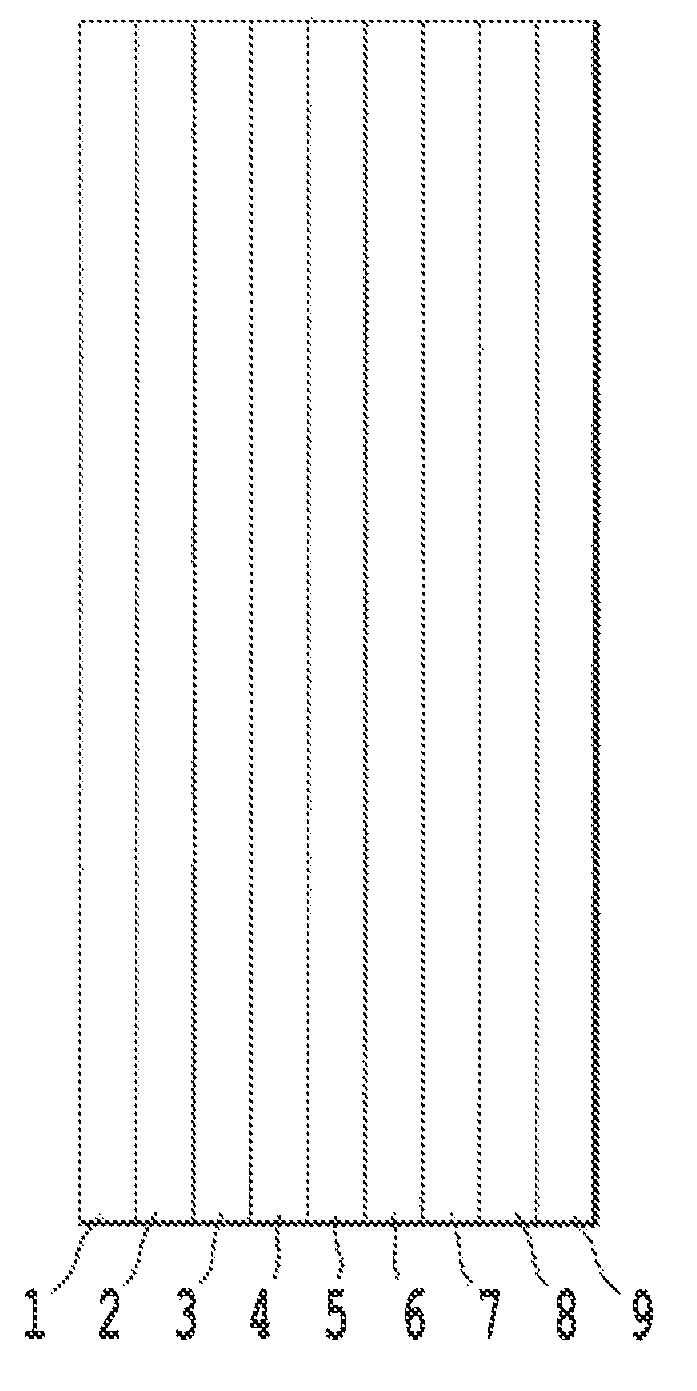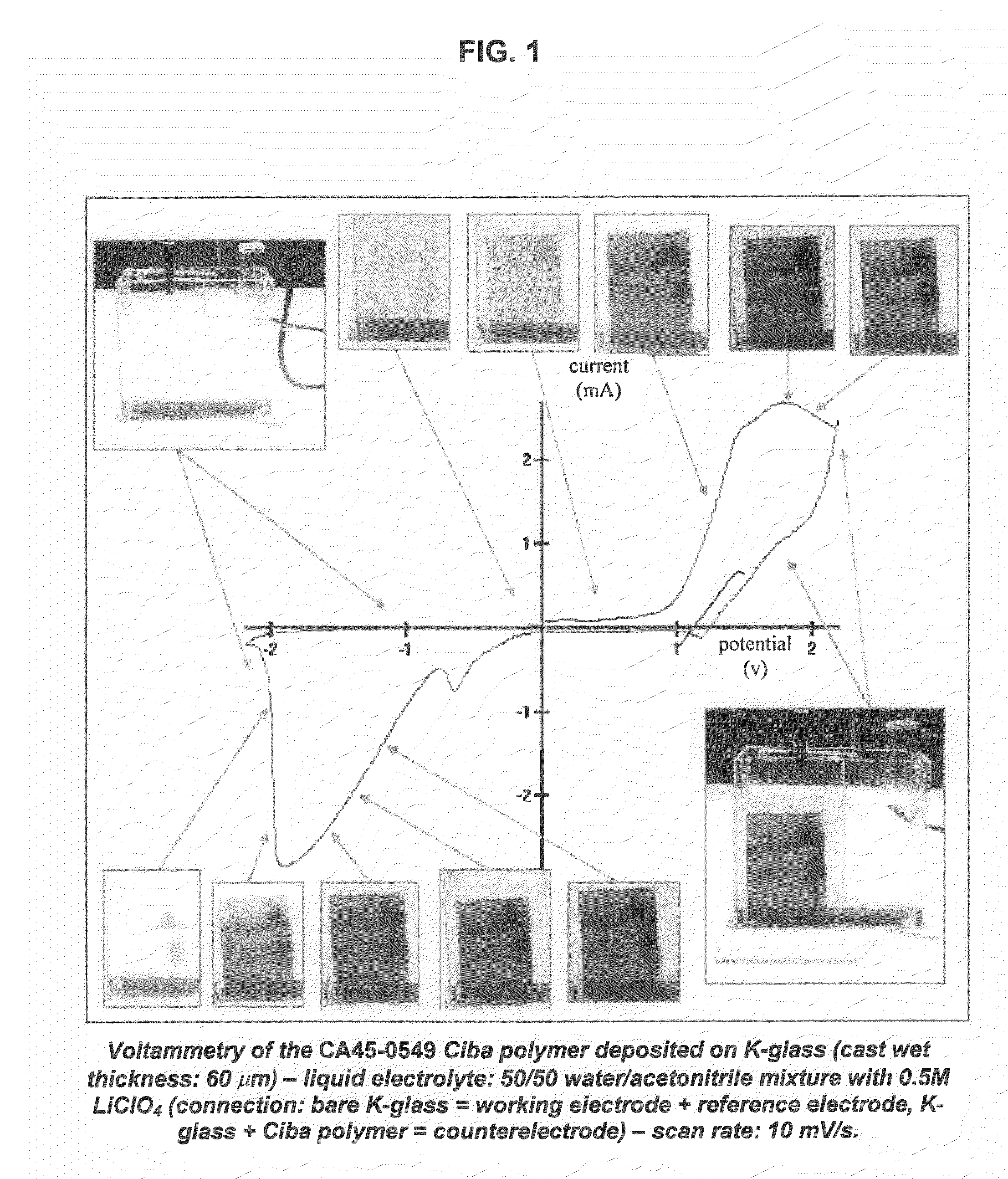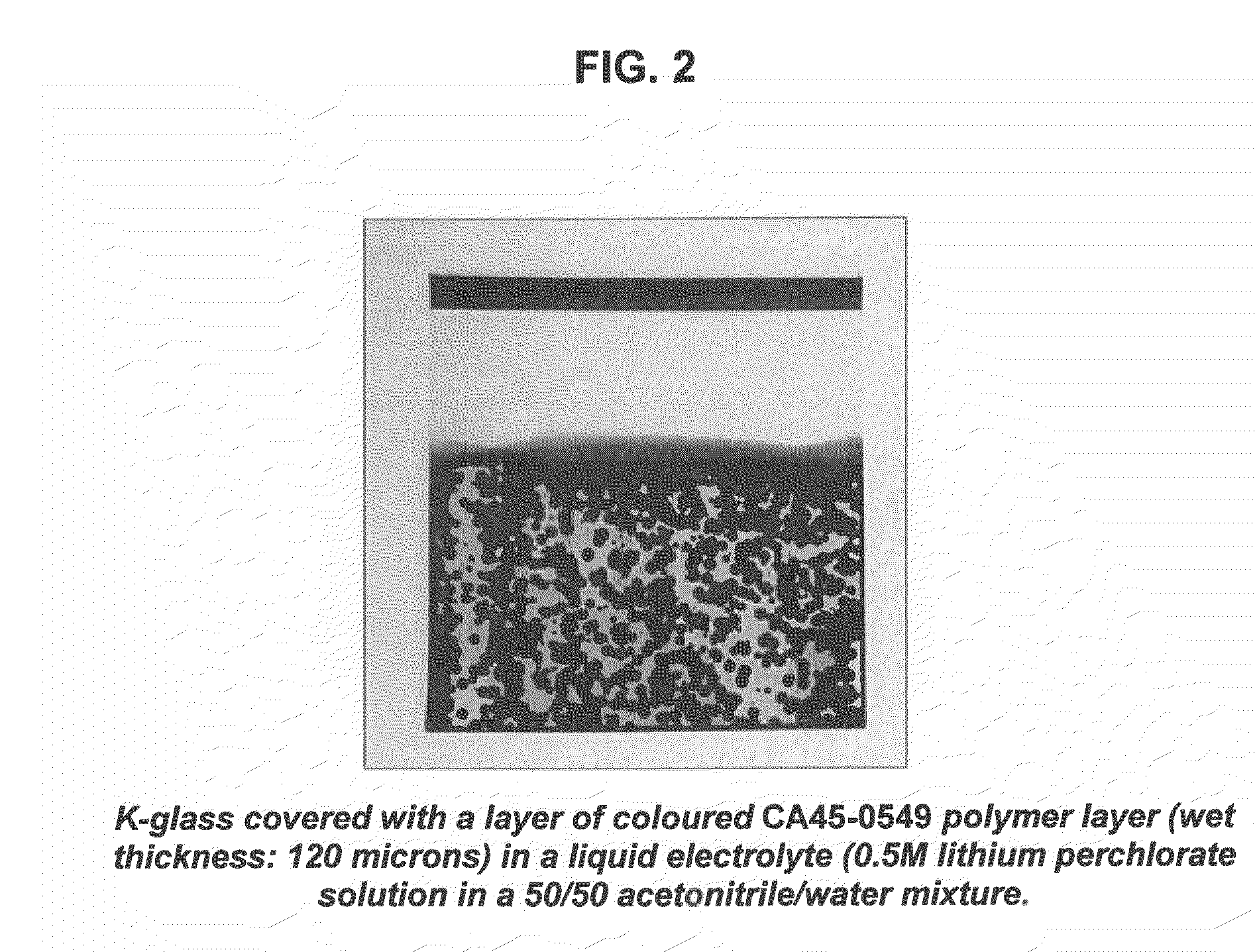Electrochromic layers, device and process of producing same
a technology of electrochromic devices and electrochromic layers, applied in the direction of paper/cardboard containers, lamination, containers, etc., can solve the problems of undesirable heterogeneity in the color intensity exhibited by conventional electrochromic devices, unusable ecd, etc., and achieve uniform color intensity
- Summary
- Abstract
- Description
- Claims
- Application Information
AI Technical Summary
Benefits of technology
Problems solved by technology
Method used
Image
Examples
embodiment 1
[0082]2. The electrochromic device , wherein the first substrate and the second substrate may be the same or different and each is one or more substrates selected the group consisting of glass, polyvinyl chloride (PVC), polycarbonate (PC), polyethylene terephthalate (PET), polyamide (PA), polyethylene (PE), polypropylene (PP), poly(methyl methacrylate) (PMMA), poly(ethylene naphthalate) (PEN) and cycloolefin copolymers (COC).
[0083]3. The electrochromic device according to embodiment 1, wherein the first substrate and the second substrate may be the same or different and each is one or more substrates selected from the group consisting of glass, polycarbonate (PC), polyethylene terephthalate (PET), poly(methyl methacrylate) (PMMA) and poly(ethylene naphthalate) (PEN).
[0084]4. The electrochromic device according to embodiment 1, wherein the first substrate and the second substrate are a glass substrate.
[0085]5. The electrochromic device according to embodiment 1, wherein the first ele...
embodiment 18
[0107]19. The electrochromic device , wherein the adhesion promoter agent is one or more silanes selected from the group consisting of an alkyl silane, an amino silane, an aryl silane, a chloro silane, an epoxy silane, a fluoroalkyl silane, a glycol silane and a methacyl silane.
[0108]20. The electrochromic device according to embodiment 18, wherein the adhesion promoter agent is a glycol silane selected from the group consisting of 3-glycidyloxypropyltrimethoxysilane (GLYMO), 3-glycidyloxypropyltriethyoxysilane (GLYEO), and combinations thereof.
[0109]21. The electrochromic device according to embodiment 18, wherein the pore forming agent is one or more pore formers selected from the group consisting of a high boiling point solvent, a phthalate-based plasticizer, a trimellitate-based plasticizer, an adipate-based plasticizer, a maleate-based plasticizer, a citrate-based plasticizer and a benzoate-based plasticizer.
[0110]22. The electrochromic device according to embodiment 18, wherei...
embodiment 23
[0112]24. The electrochromic device , wherein the one or more polyelectrolytes are negatively charged and associated with one or more cations selected from the group consisting of H+, Li+, Na+, ammonium, piperidinium, pyridinium, pyridazinium, pyrimidinium, pyrimidinium, pyrrolidinium, pyrrolinium, pyrrolium, pyrazolium, imidazolium, triazolium and oxazolium.
[0113]25. The electrochromic device according to embodiment 18, wherein the electrolyte is one or more acids selected from the group consisting of sulfuric acid (H2SO4), trifluoromethanesulfonic acid (CF3SO3H), phosphoric acid (H3PO4) and polyphosphoric acid (Hn+2PnO3n+1).
[0114]26. The electrochromic device according to embodiment 18, wherein the electrolyte is one or more alkali metal salts selected from the group consisting of sodium trifluoromethanesulfonate, lithium trifluoromethanesulfonate, sodium perchlorate, lithium perchlorate, sodium bis(trifluoromethanesulfonyl)imide and lithium bis(trifluoromethanesulfonyl)imide.
[011...
PUM
| Property | Measurement | Unit |
|---|---|---|
| pore diameter | aaaaa | aaaaa |
| pore diameter | aaaaa | aaaaa |
| thickness | aaaaa | aaaaa |
Abstract
Description
Claims
Application Information
 Login to View More
Login to View More - R&D
- Intellectual Property
- Life Sciences
- Materials
- Tech Scout
- Unparalleled Data Quality
- Higher Quality Content
- 60% Fewer Hallucinations
Browse by: Latest US Patents, China's latest patents, Technical Efficacy Thesaurus, Application Domain, Technology Topic, Popular Technical Reports.
© 2025 PatSnap. All rights reserved.Legal|Privacy policy|Modern Slavery Act Transparency Statement|Sitemap|About US| Contact US: help@patsnap.com



